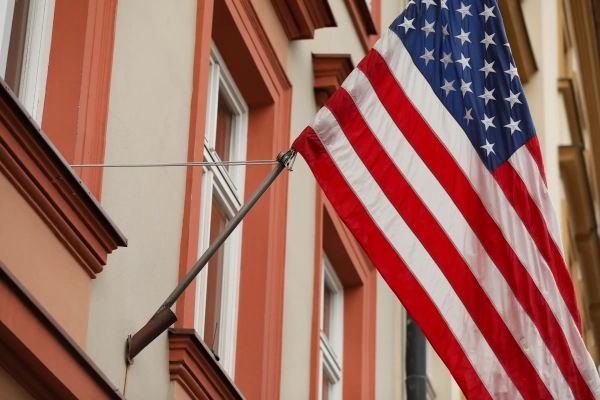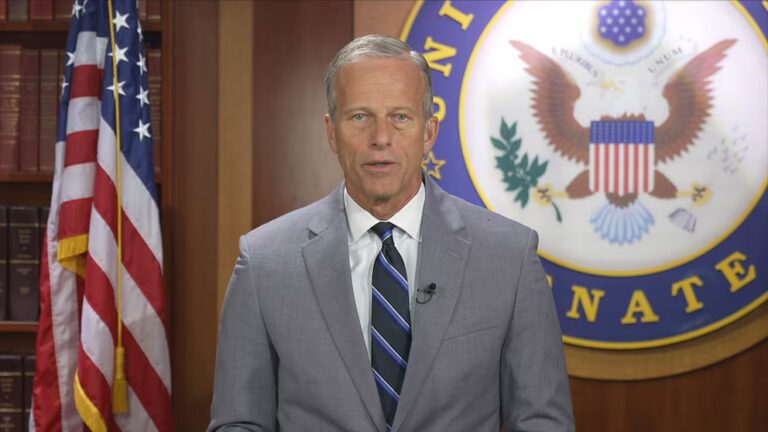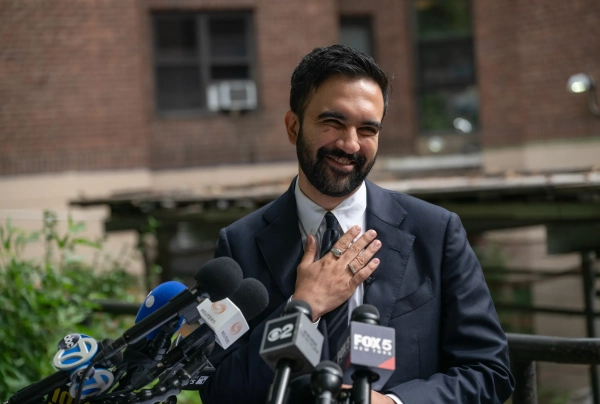
In present-day America, divergent political viewpoints are mirrored in items like jeans (Levi Strauss versus Wrangler), beers (Heineken versus Coors), and even footwear (Birkenstocks versus cowboy boots). The MAGA phenomenon is often linked with figures like Kid Rock and the consumption of steak.
In an epoch where partisan schism is so delicate that endorsing political force has amplified and brutal political episodes are escalating — with the Charlie Kirk attempted murder being the most recent noteworthy case — it’s challenging to recall times when things weren’t always this way.
Not long ago, in the 1950s, Americans demonstrated political tranquility — so much so that an assembly from the American Political Science Association urged both political factions to accentuate their disparities, to present a “genuine selection.” Back in 1964, Barry Goldwater ran for the presidency as the Republican promising “a choice, not an echo,” and he was overwhelmingly defeated despite his efforts. Some academics in political science hailed the era’s political disinterest as both a testament to societal contentment and a buffer for the system. Fast forward four generations, and it seems there’s excessive party discord and insufficient political indifference.
Why has society evolved to a state where even open-toed footwear is seen as left-leaning?
Straightforward explanations might highlight contentious politicians, especially President Donald Trump, aggressive social movements such as the Tea Party and Black Lives Matter, or shifts in the media landscape, like the proliferation of cable television followed by online platforms like Facebook and TikTok. However, the primary aspect, as many researchers have determined, is the growing percentage of Americans who consider political affiliation to be foundational to their self-image — affecting their thoughts, feelings, and sense of self.
I must pause at this point: This assertion does not precisely pertain to the majority of Americans. As of 2024, only 30% of Americans identified as “strong” Democrats or Republicans (with only about half even asserting allegiance to a political party). The largest segment of Americans doesn’t identify strongly with any party. They possess minimal interest in, discussion of, knowledge of, or consumption of political content — and their voting rates are low (although their votes decide who gains power, as the partisans are nearly equally split).
Politicization has now advanced past influencing Americans’ viewpoints on various topics or even their cultural preferences, to actually shaping their sense of identity.
Nevertheless, the politicization of numerous Americans carries weight even for the apolitical. The latter comprise the audience for the political performance — which Americans describe as “tiring” — and during their infrequent votes, generally every four years, they are faced with sharply divided choices. For the country on the whole, this translates to less meaningful collaboration and heightened antagonism and resentment.
Related
- Why the media is so polarized — and how it polarizes us
A different story of political polarization
A familiar narrative exists regarding political polarization. The ideological distance between the major parties was compressed during the early part of the 20th century. A greater proportion of Republican senators, compared to their Democratic counterparts, endorsed the 1964 Civil Rights Act; 13 Republican senators cast votes in 1965 to establish Medicare.
The schism between politicians then grew substantially and swiftly, potentially instigated initially by racial matters, then others. When Obamacare was enacted in 2010, it secured zero votes from Republicans; a mere single Democrat voted to confirm Justice Brett Kavanaugh to the Supreme Court in 2018. The enlarging gulf expanded to other facets of governance, like state legislative assemblies and rulings by the judiciary, eventually affecting the politically engaged populace.
Political party has gained such significance that views regarding the prevalence of racial prejudice now exhibit more divergence among Democrats and Republicans than between Black and White individuals.
However, politicization signifies significantly more than party divergence regarding policies. Politicization has advanced past influencing numerous Americans’ stances on issues or even their cultural preferences, extending to molding their identity — the people they date (and marry and befriend), the groups they join, their religious affiliations, and critical choices impacting their lives.
In the past several decades or so, an increasing number of Americans have organized or revised their perspectives on an array of diverse policies — such as those concerning immigration, abortion, warfare, climate, gender identity, and crime — to more accurately reflect their identities as Democrats or Republicans. Stances on abortion, intimately associated with one’s ethical sensibilities, present a striking illustration. In the early 1970s, Republicans were roughly on par with Democrats in their likelihood to concur, as per the NORC/University of Chicago General Social Survey, that “a pregnant woman should be able to obtain a legal abortion if she is married and doesn’t wish to have more children.” Fifty years hence, overall American opinion remained mostly consistent, though Republican advocacy for such abortions had declined by around 20 percentage points, while Democratic backing had risen by about 15 points; the abortion issue had become a definitive marker of party identity. Likewise, in 1997, members from both parties expressed similar levels of apprehension, based on a Gallup survey, about the onset of global warming effects; by 2021, a 53-point gap emerged between increasingly concerned Democrats and increasingly optimistic Republicans.
One mechanism through which this polarization might occur involves individuals shifting party affiliations to align with their evolving perspectives on subjects like abortion or climate change. Unquestionably, some of this has occurred. Nevertheless, considerable research reveals that individuals more frequently altered their viewpoints to correspond with their political identities. This is corroborated by longitudinal studies monitoring individuals across several years, indicating that people often adjust their stance on a subject of substance following an initial alteration in their political allegiance, possibly adopting the new allegiance due to political occurrences unrelated to the subject or stemming from new personal circumstances such as a marriage, a new occupation, or relocation. To reiterate, concerning the abortion example, numerous individuals became Republicans (perhaps influenced by racial beliefs or new relationships) and subsequently adopted a pro-life stance.
Increasingly, even survey participants’ accounts of reality, such as whether economic conditions are improving or deteriorating or whether disparity is intensifying, vary contingent upon their party affiliation. Political allegiance has become so dominant that sentiments regarding the prevalence of racial discrimination now exhibit greater divergence among Democrats and Republicans than between Black and White individuals; perceptions of wealth inequality exhibit a stronger correlation with party association than with individuals’ income brackets.
For a growing number of Americans, political stance is now linked to diverse tastes extending far beyond government policy— such as enjoying Kid Rock or Beyoncé, visiting museums or playing golf, watching Curb Your Enthusiasm or Antiques Roadshow. Consumption as a form of political expression — for instance, coffee branded by political orientation — has been acutely demonstrated in Berkeley, California (where I live): First, widespread ownership of Teslas reflecting climate liberalism (along with substantial financial resources), followed by frequent protests against Tesla, symbolizing DOGE-fighting liberalism.
Some might dismiss this politicization as merely performative, aimed at provoking liberals, or an example of what pollsters term “expressive responding.” However, the phenomenon of politicization is more deeply ingrained than that.
Party affiliation seemingly increasingly governs, not merely mirrors, Americans’ vital personal decisions. Much of the discourse surrounding “affective polarization” — indicating that more Democrats and Republicans currently harbor animosity toward the opposing side — originated from a study revealing that in 2010, a higher proportion of Americans felt discontented, compared to 1960, at the prospect of a son- or daughter-in-law belonging to a different party. In subsequent years, numerous single Americans dismiss the idea of dating someone espousing dissimilar political views.
A 2020 survey found that approximately half of both Democrats and Republicans maintain intimate social circles exclusively comprising individuals who align with their political beliefs. Despite survey participants frequently perceiving greater consensus among their acquaintances than genuinely exists, this uniformity remains substantial and has intensified. (Social uniformity, reciprocally, encourages partisanship and antagonism.)
Such political sameness arises partly from individuals’ choices of companions and those they elect to distance themselves from. Staunch partisans prefer associating with like-minded individuals and circumventing dialogues with those of differing views. They also exhibit a tendency to disassociate from friendships (less so with family) based on political disagreements. According to one estimate, 15% of Americans “have terminated a friendship over politics.” Political sameness also stems partly from familial, peer, and community pressures to adhere to their viewpoints.
Political identity exerts influence on individuals in more subtle ways, too. Americans have increasingly geographically segregated themselves — not solely for the purpose of residing near neighbors sharing party affiliations, although this phenomenon does occur to some extent, but because the motivations driving relocation — or the choice not to relocate — are progressively intertwined with political allegiance. For example, those favoring large homes and expansive yards tend to congregate in politically conservative regions, while those valuing pedestrian access to nearby amenities tend to settle in politically liberal locales. Irrespective of the underlying reasons, the correlation between party identity and neighborhood has strengthened. A 2021 study concluded that numerous “voters live with virtually no [local] exposure to voters from the other party.”
Even more remarkably, Americans have increasingly aligned their professed religious beliefs to correspond with their stated political ideologies. Religion and politics have long been intertwined within the United States — as evident in 19th-century disputes concerning alcohol prohibition, Sunday postal services, and the determination of which Bible version should be utilized in public educational institutions, wherein Americans’ religious convictions guided their political involvement. For approximately three decades, politics have merged with religion, with political orientation crucially shaping expressions of faith.
It became first apparent in the 2000s that individuals identifying as Democrats, liberals, and moderates were departing from established religious structures and defining themselves as unaffiliated with any religion (identifying as “nones”), significantly as a reaction against what they perceived as the conservative politicization of the church, especially in relation to lifestyle issues.
Subsequently, evidence accumulated over the past decade that more conservatives were starting to profess faith, particularly evangelical faith, likely for analogous mirror-image reasons: to repudiate the secularism linked to liberal stances, such as supporting gender transition. Ryan Burge, the dynamic analyst behind Graphs about Religion, suggested to me that the recent stabilization in the expansion of “nones” may be attributed to conservatives’ perception that non-affiliation has “become so linked to left-wing politics.” These conservatives “are functionally non-religious… but they still can’t bear to not ID as Christian on a survey.” That political affiliation has come to alter a significant number of Americans’ religious identities is profound testimony to the politicization of many Americans’ lives.
Moreover, politics intersect with life-altering choices. Unsurprisingly, distinctions arise between the left and right on numerous health-related subjects — including childhood vaccines, cancer prevention strategies, and the hazards of tackle football. However, the divide also encompasses health behaviors, from dietary preferences, such as meat consumption, to exercise routines. Consequently, residents of politically conservative counties are more prone to obesity compared to their counterparts in politically liberal counties, even after accounting for factors like race, socioeconomic status, and educational background.
The most heartbreaking instance transpired during the Covid-19 pandemic. Individuals residing in states with politically conservative inclinations, where vaccine hesitancy was most prevalent, encountered elevated mortality rates relative to those in politically liberal states; individual Republicans succumbed at greater rates than individual Democrats. Hundreds of thousands of fatalities may plausibly be attributed to political allegiance.
Related
- Donald Trump is building a strange, new religious movement
So what happened?
Seventy years prior, elements such as gender, race, and geography were more influential in shaping Americans’ lifestyles, destinies, and identities than at present; educational background and, increasingly, political affiliation have emerged as the key determinant of numerous individuals’ sense of self.
What transformations have prompted this outcome for so many of us? Scholars have debated the extent to which current red-blue divisions and antagonisms stem from disparities in ideology and policy preferences, or from considerations of “social identity” and sentiment.
One perspective posits that a greater number of Americans have aligned themselves more coherently around a cohesive collection of political viewpoints. During the mid-20th century, voters holding opinions often exhibited a mixture thereof; it was a time characterized by both conservative and liberal Democrats, along with conservative and liberal Republicans, though dominated by the indifferent, as emphasized by the political science commission. While party association could be connected to specific concerns — such as the alignment of unionized laborers with Democrats — it more commonly stemmed from intergenerational family and community traditions.
This transition commenced in the 1950s, accelerating throughout the 1960s and 70s, initially centering on racial concerns. Conservative white Southerners defected from the Black-inclusive Democratic Party to embrace the Republican Party, which had evolved into a more sympathetic haven for white individuals due to its “Southern strategy.” Subsequently, it is asserted, parties adopted positions on additional issues congruent with their constituents’ preferences. The GOP, increasingly comprised of white Southerners, embraced their evangelical perspectives regarding abortion; the Democratic Party, correspondingly, evolved into the champion of legal abortion as a result of counter-reaction. (This partly elucidated the decline in Catholic affiliation with the Democratic Party from the late 20th century into the early 21st century.) Hence, disparities in policy, notably concerning a set of well-known, “branded” party platforms like government spending, race relations, immigration, and abortion, fueled politicization.
The alternative account suggests that the political aversion, the biases in reasoning, and the loyalty to the partisan group evident in modern-day politics are most effectively comprehended as stemming not from deeply held policy convictions, but from many Americans grounding their individual identities in politics. According to one advocate of this viewpoint, the party’s “failures and victories become personal.”
In practice, ideology about policy and partisan identity are entangled, reciprocally driving one another. The pro-life advocate comes to align with the Republican Party, while the devoted Republican comes to embrace pro-life viewpoints. Nevertheless, a majority of scholars appears to acknowledge a significant psychological facet inherent in this politicization. In light of the pervasiveness of partisanship across even personal facets of existence, the extent to which party affiliation seems to shape other identities like religious faith, the irrational sentiments frequently implicated, and the inherent arbitrariness of party platforms (e.g., combining lower estate levies with restrictive immigration policies), it becomes difficult to dismiss the conclusion that identity has been a key driver of politicization.
Reinforced via these mechanisms, residing in a politically uniform social milieu yields certain ramifications, including more antagonistic and ill-informed viewpoints regarding members of the opposing party (such as overstating the prevalence of LGBTQ+ individuals among Democrats and the proportion of wealthy Republicans), and exaggerating their stances. Numerous initiatives are presently underway to mitigate the polarizing consequences of partisan sameness by uniting partisans or introducing them to novel information, met with varying levels of success. The crucial point lies in the fact that politically defined associations highlight the magnitude to which numerous — although, again, not most — Americans have experienced politicization. Their identities are intimately connected to the affiliations of their associates, and these affiliated individuals increasingly revolve around politics.
If we view the politicization of all aspects of existence as problematic, can we revert to the circumstances of the 1950s? Doubtful; the consensus-driven 50s represented an atypical era. Attaining the level of political involvement characteristic of the 1990s, situated between the subdued 1950s and the frenetic 2020s, may prove feasible. However, not imminently. It would likely necessitate a hangover effect from the heightened politicization of the Trump era — exemplified by the Charlie Kirk memorial when Trump, responding to the widow’s plea for compassion, proclaimed, “I hate my opponent, and I don’t want the best for them. Sorry, Erika” — or fundamental social change, such as an economic collapse that privileges affiliations other than party allegiance, before partisan identities, now potent enough to shape everything from brand loyalties to religious affiliation, diminish anytime soon.
Source: vox.com






